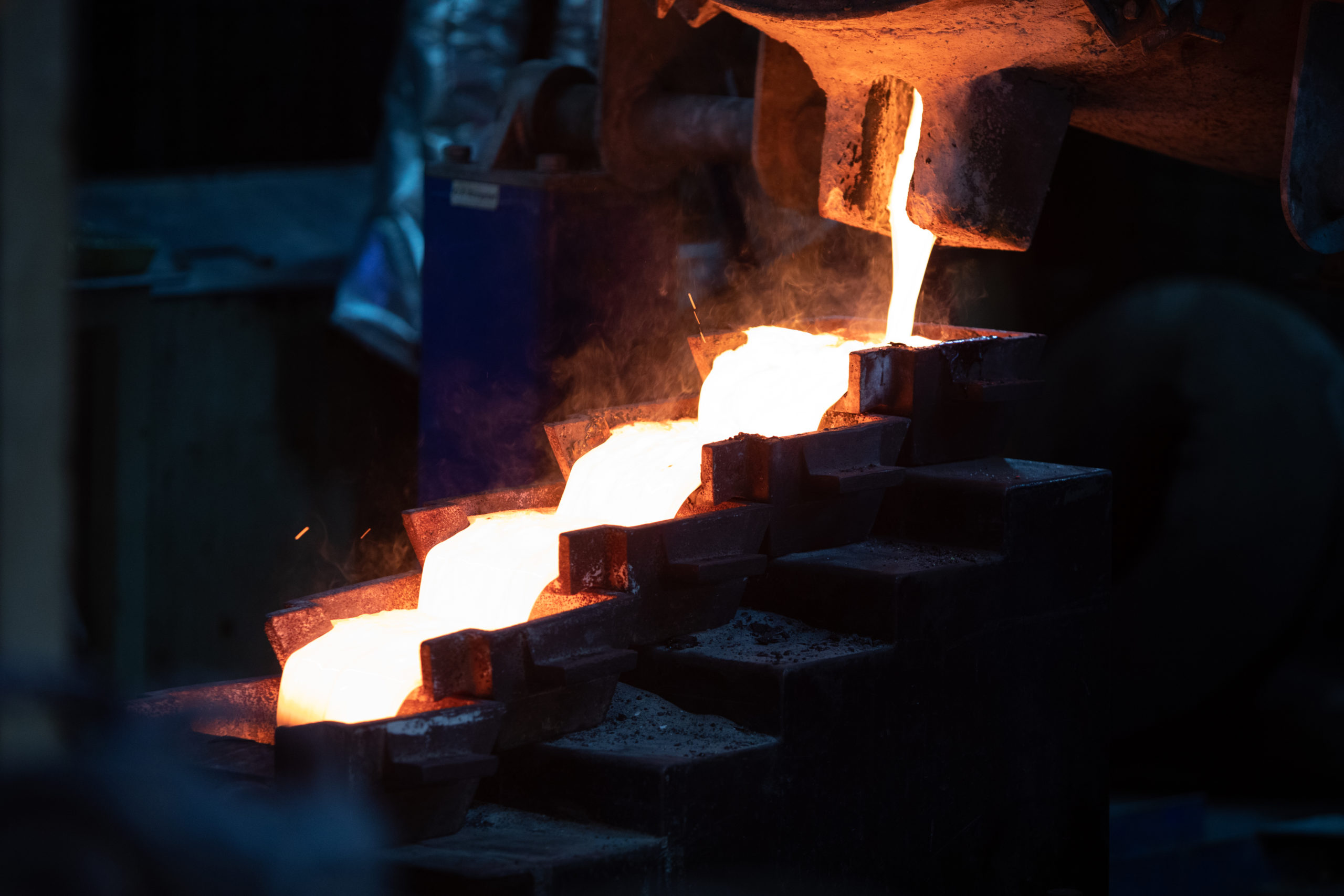The world’s best mining schools – where are they?

Where should you go if you want to obtain your mining degree from one of the world’s best mining schools?
The Quacquarelli Symonds (QS) World University Rankings are in for 2020 and, not surprisingly, one of the world’s powerhouse mining economies dominates the Top 10 list of University mining schools with 5 of them, 4 of which are in the Top 5. The same country has 9 mining schools in the Top 50 (7 are in the Top 25), 2 more than closest rivals Canada and the US.
However, there aren’t any prizes for guessing which country this is. Most people, even those not involved in the industry, are aware of Australia’s global dominance in most things mining related. Therefore, it makes sense that they should also have some of the best training pathways for supplying the industry with the talent and expertise it requires.
Before we look at the institutions that have claimed pole position though it’s worth delving into the criteria by which QS, the owner of the Top Universities lists and website, compiles its increasingly popular Who’s Who of higher education academic institutions. There are 6 metrics used:
- Academic Reputation (40%)
- Employer Reputation (10%)
- Faculty/Student Ratio (20%)
- Citations per faculty (20%)
- International Faculty Ratio (5%)
- International Student Ratio (5%)
Academic reputation
Each year QS sends out an annual Academic ‘Opinion’ Survey to acknowledged higher education experts around the world. The survey is specifically looking for feedback and opinions around the quality of teaching and research at all universities globally. The responses, and there are some 94,000 of them each year, are then collated and analysed to come up with an ‘Academic Reputation’ metric score. As the largest and most thorough ‘academic opinion’ survey anywhere, it has become an excellent tool for measuring academic sentiment amongst the world’s higher education professionals.
Employer reputation
The World University Rankings (WUR) is designed to be a tool that helps students choose the best university for their needs. Given that not all universities are created equal in the eyes of many employers, and that certain industries favour certain universities, it’s logical to think that students would prefer to attend one that has a good reputation within their chosen industry. After all, the vast majority of students attend university precisely to obtain the qualifications required to find employment and embark on, or further, their career.
Australia has global dominance in most things mining related. Therefore, it makes sense that they should also have some of the best training pathways for supplying the industry with the talent and expertise it requires
This is why employer reputation is factored into these rankings. The metric is based on the responses to the QS Employer Survey. They receive around 45,000 responses from employers via the survey, which asks them to specify those universities that provide them with the best graduates (based on competence, effectiveness, and innovation).
Faculty/student ratio
Students like to think they’re going to receive a quality education, taught by quality teachers. This is a very difficult metric to quantify and measure though. However, it’s generally accepted than the better the student to teacher ratio, the greater the chances of receiving better quality teaching.
This is the premise QS uses to come up with a metric that students can use to determine which university is likely to provide them with better quality teaching. It assumes that the more lecturers and faculty members per student a university has, the less the teaching burden on each academic is. This in turn flows on to providing more chances for students to have access to those academics and thus obtain a better quality education.
Citations per faculty
Most if not all reputable education facilities are also involved in research projects and publishing the results of that research for the betterment of mankind. The quality of their research is an important indicator of both the credentials of the academics that work there and the level to which the institution itself gets involved in furthering knowledge generally.
One of the most common ways of measuring how significantly a university contributes to the global ‘knowledge bank’ is by looking not only at the number of papers produced by its academics (how active they are in research), but also the number of citations that work receives (how well credentialed the research is).
QS works out its Citations per faculty metric by working out the total number of citations an institution receives for the research papers it produces during a particular 5-year period (this changes each year). This figure is then divided by the number of faculty members at the respective institution. There are built in normalisations designed to ensure all papers receive the same weighting regardless of field (there are far more citations received for Life Science papers than any other field for example). Self-citations are also removed from the count.
One of the most common ways of measuring how significantly a university contributes to the global ‘knowledge bank’ is by looking at the number of papers produced by its academics and the number of citations that work receives
The citation data comes from Elsevier’s Scopus database, which is the largest global repository of academic research papers. Typically, QS staff assesses over 13.5 million papers each year with some 70 million citations to come up with their citations per faculty ratings.
International faculty ratio and international student ratio
The better international reputation a university has, the more likely it is to attract overseas students and faculty staff to its campus. This reputation in turn feeds into the perception that the institution has a global outlook, which is vital in today’s increasingly multinational and internationally oriented world. Mining companies in Europe for example want to know that graduates from mining schools in the US or Australia have the appropriate soft skills (global awareness and international understanding) to work anywhere in the world. Internationalism is also an excellent conduit by which best practices and beliefs across cultures and countries can be exchanged.
To calculate these metrics, QS looks at how many foreign faculty members and foreign students a university has and calculates what percentage of the total number of faculty members and students they are.
The mining list education toppers for 2020
Colorado School of Mines
Holding onto number 1 position with an overall score of 93.5 is the Colorado School of Mines in the United States. It deservedly earns its number 1 spot with a consistently high academic reputation; it scored 100% for this metric. CSM also does well in the Citations per Faculty scoring. It achieved an H-index citations rating of 91.6, and a Citations per paper rating of 91.7, both of which also factor into its top ranked placing. The university doesn’t fare as well in Employer Reputation as others in the top 5 with a rating of 86.7 but its excellent scores in other metrics have pushed it into the lead.
The H-index is calculated by working out how many research papers someone, or a ‘body’ ie an institution, has produced/published (this is the H number) that have been cited H times PER PAPER. For example, someone who has at least 50 papers published that have been cited at least 50 times each, will have an H-index of 50.
Curtin University
Australian institutions take up the rest of the Top 5 positions. Curtin University in Western Australia, the second placed university on the list, incorporates the famous Kalgoorlie campus of the Western Australian School of Mines as well as a Perth campus. It also has international campuses in Dubai, Singapore, Malaysia, and Mauritius and has formed partnerships with other global university, which would give it good International Faculty and Student ratios.
Students studying at Kalgoorlie have an almost unrivalled opportunity to observe real life mining operations in action in one of the world’s historic mining centres. These factors have obviously helped to give Curtin its perfect score for employer reputation.
Curtin students can also learn how to safely operate mining equipment with the university’s mining simulator, one of the many pieces of equipment and high tech facilities made possible through a high level of industry partnership. Again, this confidence is a reflection of that perfect 100% score for employer reputation. Curtin is also heavily invested in research and development, both important metrics for ranking well on the Top Universities list. Interestingly, Curtin is one of only a handful of universities on the list that has a 5 star QS stars rating as well.
Curtin has an overall score of 85.2. It has an Academic Reputation of 64.3, the previously mentioned perfect 100 for Employer Reputation, an H-index citation ranking of 99.4, and a Citations per Paper ranking of 96.9.
University of Western Australia
In third place is another Western Australian mining school, that at the University of Western Australia. UWA’s mining school has an overall score of 80, an Academic Reputation of 54, a healthy Employer Reputation of 96.4, and excellent research ratings of 99.7 for H-index Citations, and 96.6 for Citations per paper.
UWA is also amongst the top 100 universities globally across all faculties. It has 2 campuses in Perth and Albany. The Perth campus is renowned for its grand heritage-listed gardens and beautiful historic sandstone buildings. UWA has a global reputation for research and many significant industry partnerships. It also attracts thousands of international students annually, many of them for mining and engineering degrees.
University of New South Wales
Just behind UWA is another of the Group of Eight Australian founding universities, and one that dubs itself Australia’s Global University. The University of New South Wales sneaks into 4th place with an Overall Score of 79.6. It has an Academic Reputation rating of 58.6, a good Employer Reputation of 94.3, an H-index citation ranking of 92.3 and a Citations per Paper ranking of 93.6.
Overall, UNSW regularly makes the Top 50 list of global universities and has a high employability ranking for its graduates, including those in its mining and engineering courses. It also runs the Australian Defence Force Academy in Canberra, and has a second Sydney campus at Paddington. Like Curtin, UNSW also rates a 5+ star QS rating.
University of Queensland
Staying on the east coast of Australia, we have the University of Queensland rounding out the top 5 global mining schools. Like Western Australia, Queensland is another mining hotspot for Australia so it’s not surprising that its primary tertiary institution has a reputation for producing some of the best mining personnel in the world. UQ is also one of only 3 Australian universities in the global Universitas 21. It’s also one of the Group of 8 Australian founding universities.
It has 3 campuses in SE Queensland and is popular with international students, including those heading for a career in mining or engineering. UQ also has an international reputation for quality teaching and this year its various faculties have made it into several Top 5 rankings. One of those obviously is Mining and Minerals.
In the Mining and Minerals section, UQ comes in with an Overall Score of 79.3 so just behind UNSW and UWA. It has an Academic Reputation in the mining industry of 59.1, an Employer Reputation amongst mining companies of 96.4, an H-index Citations of 88.7, and a Citations per Paper rating of 89.4.
Rounding out the Top 10 global mining schools for 2020 are McGill University in Canada (6th), another Australian – Monash University (7th), Queen’s University at Kingston in Canada (8th), and equal 9th are the Universidad de Chile in Chile and the University of British Columbia in Canada.
So it’s fair to say that if you want a university mining degree from the best of the best, you probably should consider either Australia or Canada. Between them, these 2 countries have 8 of the Top 10.
(This article first appeared in Mining International Inc.)
More News
{{ commodity.name }}
{{ post.title }}
{{ post.date }}




Comments